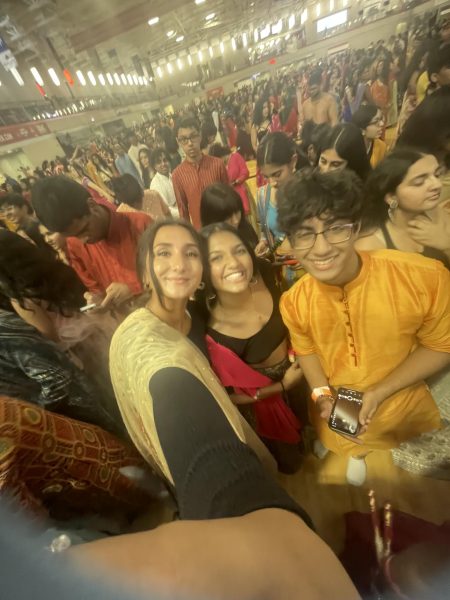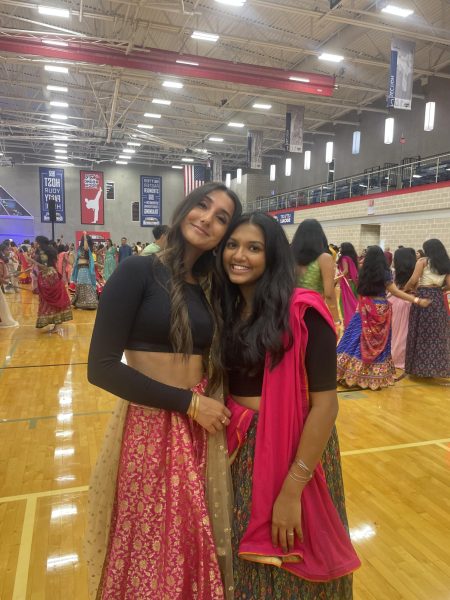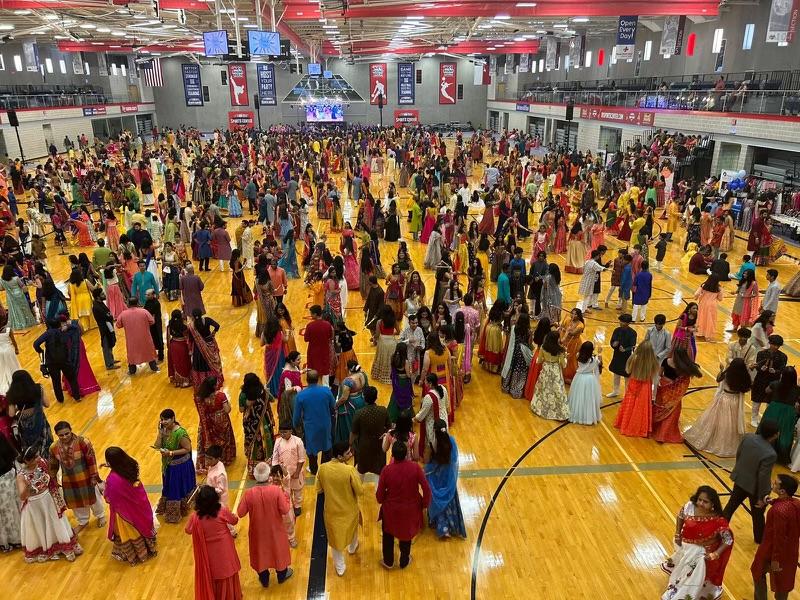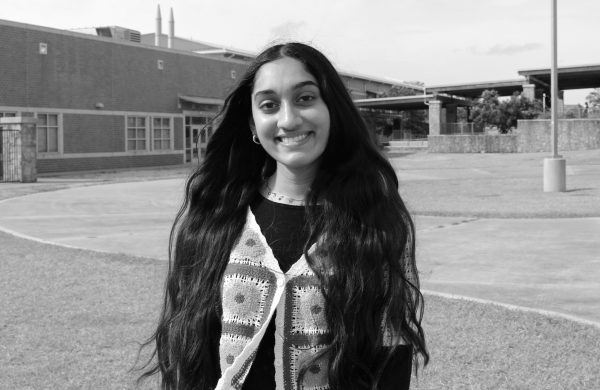Several students of Indian origin celebrated Garba, a traditional Gujarati dancing event held during the Hindu month of Ashvina, on Saturday Sep. 23 in order to honor Durga, an Indian goddess, and celebrate divine femininity.
“It’s the biggest festival in Gujarat,” junior Ayaan Anand said. “There are a lot of Gujarati people in Austin so it’s important to know about it and the different cultures of India in general.”
While Garba is Gujarati by roots, people all over India, regardless of their ethnic divisions, celebrate the festival and immerse themselves in the food, clothing and colorful culture of Gujarat.
“I have a Guju friend who did a big food celebration,” sophomore Aishwarya Garapati sai. “They made homemade food and leaf plates for everyone and we enjoyed that. [Other Indian ethnic groups] don’t do that, but the one thing that connects us is Garba.”

While everyone has different traditions for Navratri (nava – nine, ratri – nights), including observing a vegetarian diet, avoiding alcohol, singing devotional songs and attending temples, Garba is one of the central aspects of the nine auspicious days. Austin holds its annual citywide Garba event at Round Rock Sports Center.
“Usually we just get together with family and close friends, but this year we went to an [event] in Round Rock,” junior Saanvi Nagaraju said. “There were so many people there and we’re all united by this one thing that we have in common, [so] it’s really nice and welcoming.”
Back in India people celebrate Navratri everyday for nine nights, going back daily to dance through the night. Because of the time and effort involved in booking and hosting such large citywide affairs, Indian Americans typically hold only a few Garba nights. Some are held in smaller groups, like within Steiner Ranch.
“It’s one of my dreams to go and experience the nine nights of dancing,” Garapati said. “For Steiner, [however], we only do two nights: Friday and Saturday night.”
Regardless of the size of the celebration, attendees are encouraged to look their best. The men wear kurtas and women typically wear lehengas, long, flowy and intricately patterned dresses that contribute to an even more beautiful performance when the dancers spin.

“Everyone wears very festive clothing,” junior Nandini Raju said. “At the beginning we danced [to] traditional songs but, because it’s in the United States, towards the end of the night there were Bollywood songs.”
The traditional folk dance performed includes people twirling in circles with special routines incorporating dandiyas, a stick that symbolizes a sword. The custom is to dance around either a Garba Deep, a clay lantern with a light inside that represents life, or a photograph of their goddess, Durga. There are both fast and slow dandiya groups to cater to your dancing skills.
“It’s exhilarating,” Garapati said. “By the end we are sweating, all of our makeup is off, our hair is up. That’s probably the best part because it’s like a workout and just dancing to the beat is so fun.”



